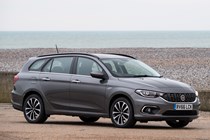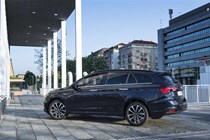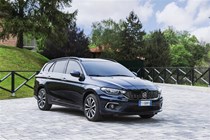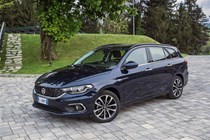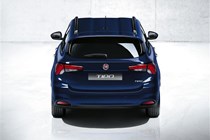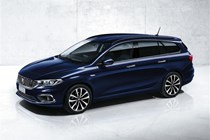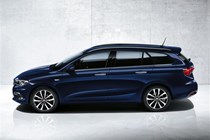
Fiat Tipo Station Wagon (2016-2021) engines, drive and performance
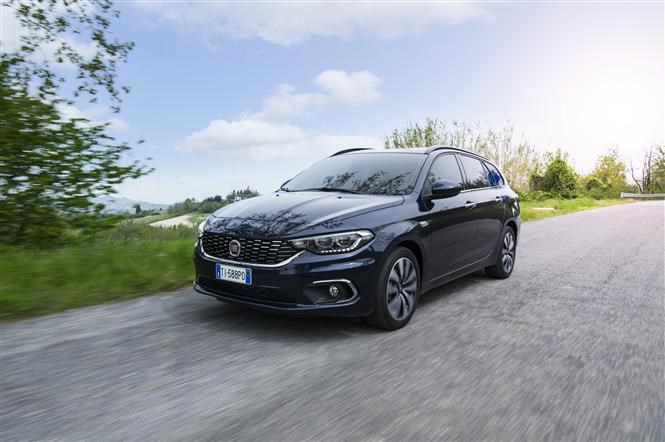
- Pair of diesels expected to sell best
- Three petrols on offer, too
- Performance is modest with all engine choices
To avoid disappointment, expect Fiat Tipo Station Wagon performance to be no more than satisfactory.
In fairness, this estate’s not designed for hustling along B-roads at considerable speed, but the 118bhp motors will do a better job of hauling the Tipo and its payload along.
Engine availability mirrors that of the hatchback range with near identical performance and efficiency figures.
Most Station Wagons expected to be diesel
There are two diesels on offer but the smaller 1.3-litre MultiJet II’s likely to have a harder time coping with the Tipo Station Wagon’s heft, fully laden or otherwise. It has a six-speed manual transmission as standard.
Producing just 94bhp and 200Nm of torque from a lowly 1,500rpm, Fiat claims a top speed of 112mph and a leisurely 12.3 seconds to complete the 0-62mph sprint.
Despite the extra weight of the Tipo Station Wagon’s longer rear end – about 15kg more than the hatchback depending on the version – Fiat claims efficiency figures aren’t inferior at 76.3mpg and 99g/km of CO2.
We much prefer the 1.6-litre MultiJet II, which has performance that’s easier to access, thanks to 118bhp and 320Nm of torque on stream from 1,750rpm. A top speed of 124mph is within reach while the dash from 0-62mph takes 10.1 seconds.
Again, quoted economy matches the hatchback equivalent with claims of 76.3mpg and 98g/km of CO2.
If you don’t fancy the six-speed manual, there’s a twin-clutch automatic alternative, known as DDCT, but official statistics have yet to be released for this version.
Range of three petrol engines
Kicking off the petrol range is the 1.4-litre non-turbo, producing a measly 94bhp and just 127Nm of torque from 4,500rpm – that’s a lot of revving of the engine and stirring of the six-speed manual gearlever to make the most of the grunt available.
Official performance figures suggest a top speed of 115mph with a dawdling 0-62mph time of 12.3 seconds.
On paper it’s reasonably efficient, though, with claims of 49.6mpg and 132g/km of CO2 emissions.
Fleshing out the Tipo Station Wagon’s petrol range is the six-speed automatic-only 1.6-litre E-TorQ, generating 108bhp and 152Nm of torque, also from 4,500rpm.
Theoretically that’s good enough for a top speed of 119mph and a 0-62mph acceleration time of 11.7 seconds.
That automatic transmission hurts overall efficiency with Fiat posting claims of 44.8mpg and 147g/km of CO2, making it the worst in the line-up.
Briskest of the Tipo Station Wagon family is the turbocharged 1.4-litre T-Jet mustering 118bhp and 215Nm at a much less frenzied 2,500rpm, although it and the six-speed manual gearbox need plenty of work to extract the available performance.
This version has a top speed of 124mph, while the 0-62mph time of 9.8 seconds makes it the only estate Tipo to dip below the 10-second threshold.
Officially it manages an average of 47.1mpg with CO2 emissions of 139g/km.
- Tipo Station Wagon’s comfort is vaunted by Fiat
- Light-feeling steering doesn’t stir enthusiasm
- Feels Euro-generic rather than typically Italian
If you hanker after a time when Italian cars were renowned for being agile handlers, then the Fiat Tipo Station Wagon won’t be a nostalgia trip.
There’s none of the brio Fiat was once famed for when driving this car – instead, it’s an ordinary, comfort-biased estate. This in itself isn’t a negative quality, but it’s best to keep expectations in check.
Although Fiat states it has made significant efforts to make the steering more feelsome to sate keener drivers, it won’t offer your palms the same degree of communication as you would experience in a Ford Focus Estate or Vauxhall Astra Sports Tourer. There’s a lightness to the steering action which makes it easy to manoeuvre around town but it feels insipid on windier back roads.
Thankfully, the comfort focus is largely successful, with minimal body-roll as the Tipo Station Wagon’s threaded along a series of challenging bends. That said, it’s not quite as game-changing as Fiat would have you believe.
The firm has fitted the Tipo with variable-rate dampers which should mean that they adapt depending upon speed and road conditions but in reality it feels a bit too soft and wallowy over rutted and undulating surfaces, making the car unsettled.
On billiard table-smooth motorways, which are more likely to be the Tipo Station Wagon’s stomping ground, it is fine, proving to be a capable cruiser.


